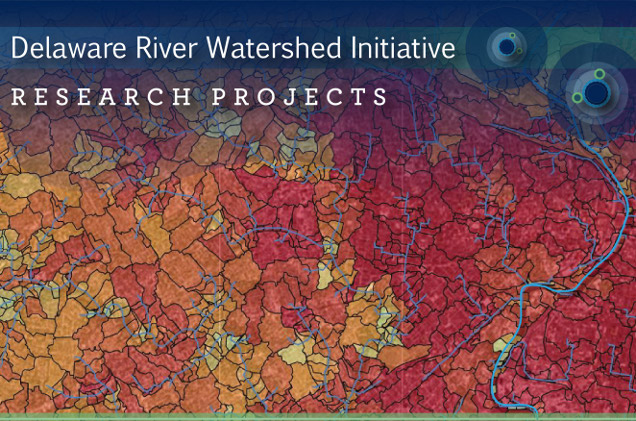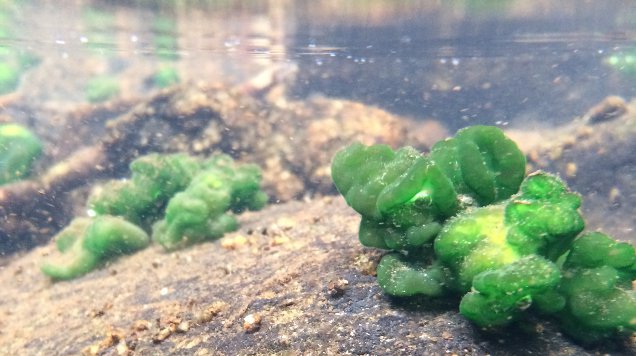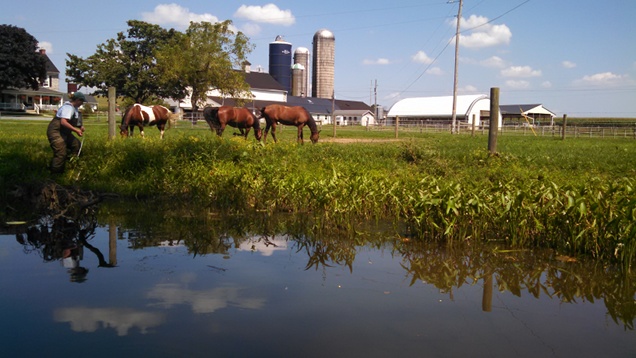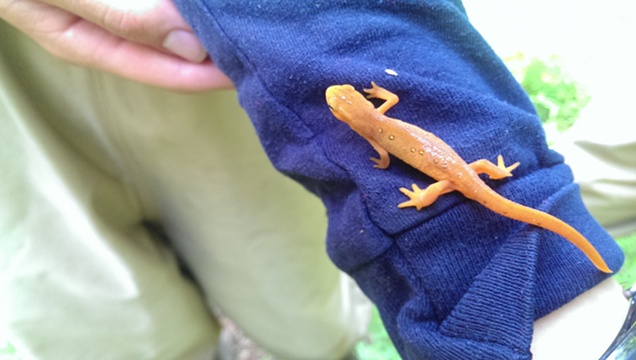
In addition to leading monitoring for the DRWI, the Academy is designing and running a number of complementary research projects.
Multiple-Stressor Index of Biotic Integrity (IBI)


An Index of Biotic Integrity (IBI) combines several biological indicators, called metrics, into a summary index for assessing impacts to an ecosystem. IBIs are specific to a given system or region; an IBI for a California river can’t be used in Pennsylvania, because the species and ecosystems are different. Using data collected throughout the Delaware Basin, Academy scientists are working to refine what metrics (macroinvertebrates, algal communities, fish, salamanders) best indicate different types of degradation. They will then combine those into a Delaware-specific multiple-stressor IBI.
Invasive Japanese Knotweed

Japanese knotweed (Fallopia japonica) is a large, fast-growing, bamboo-like herbaceous plant that quickly establishes dense stands and crowds out native streamside vegetation. Building on previous research, Academy scientists are studying the effects of invasive knotweed on macroinvertebrate (insect) communities both in-stream and on the banks, as compared to native plant species. The results of this project should inform decisions regarding restoration and/or mitigation of habitat affected by invasive vegetation.
Lentic Macroinvertebrates


Macroinvertebrates (insects) are key bioindicators used to assess stream health. They are traditionally sampled in the riffle of a stream, or the area where the water is flowing with a higher turbulence compared to a pool. In pools or areas of a waterway where the water is still (‘lentic’ areas), different populations of predator macroinvertebrates exist. In an effort to have a complete and comprehensive assessment of the total macroinvertabrate community, we are investigating these overlooked lentic habitats.
Influence of Adventive Streams

Adventive streams are small tributaries (in this case, first-order streams) that flow into larger (third-and fourth-order) streams. Examining forested and developed areas, Academy researchers are working to understand how influential the tributaries are on larger streams’ water quality. Sampling for this project is taking place in the summer to early fall of 2014 and is being conducted on larger streams both upstream and downstream of tributary confluences and on the tributaries themselves.
Development of Rapid Salamander Monitoring and Habitat Assessment Protocols for the Northeastern United States


Salamanders are abundant, important members of stream communities and sensitive to habitat loss and stream impairment. However most states lack monitoring programs/protocols for assessing stream salamanders and their habitats, and existing protocols can confound water quality impairment with habitat quality. Academy scientists are developing protocols to assess salamanders and their habitats, and preliminary findings from 2013 have shown relationships between salamander metrics and watershed impairment. For example, percent embeddedness and percent fine substrate may be negatively correlated with the relative abundance of northern dusky salamander (Desmognathus fuscus), a salamander associated with good water quality. Efforts are now focused on improving the protocols to ensure detectability of uncommon and rare species to determine the appropriate spatial scale for sampling and to improve habitat assessment.
Attenuation of Sediment Runoff by a Vegetated Riparian Buffer Strip (in partnership with the American Littoral Society)

Sediment runoff is the number one pollutant degrading water quality in the Delaware River Basin. Increased sediment may fill in pore space, reduce habitat complexity, increase turbidity, and cause other cascading effects. Vegetated riparian buffer strips are one way to reduce sediment inputs to surface waters. Along Barrett’s Run (in the Cohansey River watershed), the American Littoral Society is restoring a 7-acre tract of farmland to a meadow of warm-weather grasses, and Academy scientists expect this restoration to reduce the amount of sediment runoff reaching the stream. To assess the impact, devices have been installed to measure the attenuation of total suspended solids (mostly fine sediment) by the restoration area. The Littoral Society is also exploring use of this site, which is proximate to a school, as an educational and demonstration project.